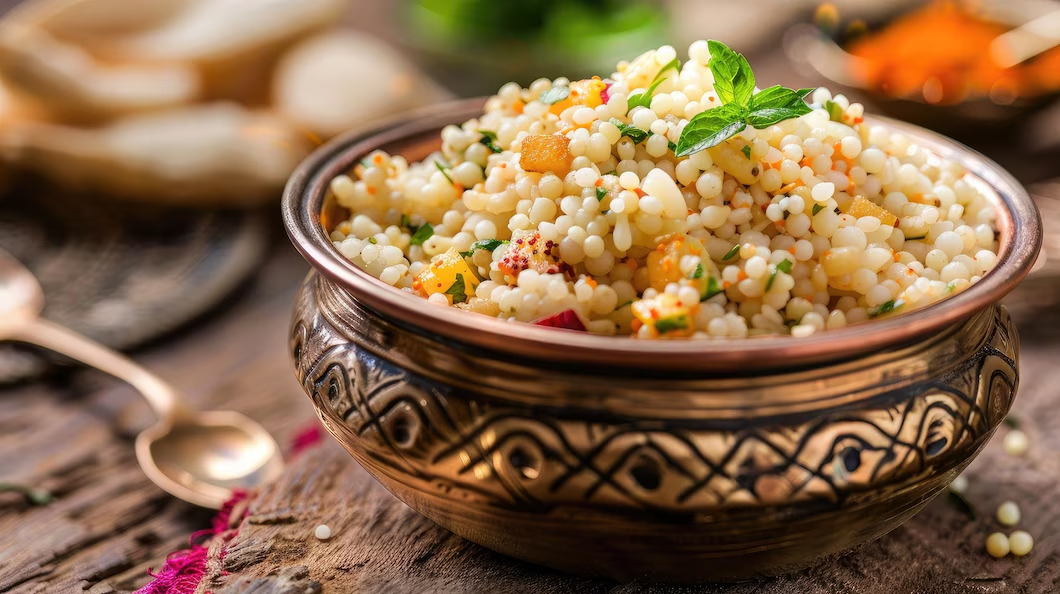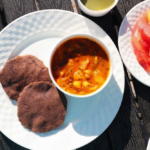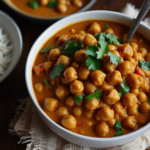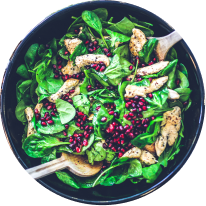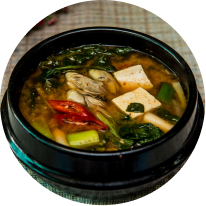Janmashtami, the auspicious festival celebrating the birth of Lord Krishna, is observed with great devotion and enthusiasm across India. It’s a time for spiritual reflection, cultural rituals, and, of course, a unique culinary experience. Fasting is a significant part of Janmashtami, and devotees prepare special dishes that are both delicious and in accordance with the fasting rules. One such quintessential dish is Sabudana Khichdi—a savory, gluten-free delicacy that’s perfect for the occasion.
In this blog, we’ll explore the history and significance of Janmashtami fasting, the benefits of Sabudana, and a detailed recipe for making the perfect Sabudana Khichdi to celebrate this festival with both devotion and flavor.
The Significance of Janmashtami and Fasting
Janmashtami marks the birth of Lord Krishna, the eighth avatar of Lord Vishnu, who is worshipped for his teachings, wisdom, and playful nature. This festival falls on the eighth day (Ashtami) of the Krishna Paksha in the month of Bhadrapada, according to the Hindu calendar.
Fasting on Janmashtami holds deep spiritual significance. Devotees fast to purify their mind and body, and to honor Lord Krishna. The fast is usually observed from sunrise to midnight, the time believed to be when Lord Krishna was born. Some devotees opt for a ‘Nirjala’ fast, which means fasting without even water, while others follow a ‘Phalahar’ fast, where fruits, milk, and specific fasting foods are allowed.
Fasting during Janmashtami isn’t just about abstaining from food; it’s about self-discipline, devotion, and spiritual reflection. The fast is broken at midnight after the ceremonial birth of Lord Krishna, followed by a feast with specially prepared fasting foods.
Why Sabudana?
Sabudana, also known as tapioca pearls, is a popular ingredient in Indian fasting recipes. It’s a starchy, gluten-free food derived from the roots of the cassava plant. Sabudana is light on the stomach, easy to digest, and provides a good source of energy, which is especially important during a fast.
Here are some reasons why Sabudana is an ideal fasting food:
- Rich in Carbohydrates: Sabudana is high in carbohydrates, making it a great energy booster during fasting periods.
- Gluten-Free: It is naturally gluten-free, making it suitable for those with gluten intolerance.
- Easily Digestible: Sabudana is easy on the stomach and doesn’t cause any digestive issues, making it perfect for fasting.
- Versatile Ingredient: It can be used to prepare various dishes like Sabudana Khichdi, Sabudana Vada, and Sabudana Kheer, all of which are popular fasting foods.
Sabudana Khichdi Recipe
Ingredients:
– 1 cup Sabudana (tapioca pearls)
– 2 medium-sized potatoes, boiled and cubed
– 1/2 cup roasted peanuts, coarsely ground
– 2-3 green chilies, finely chopped
– 1 teaspoon cumin seeds (jeera)
– 8-10 curry leaves
– 1 tablespoon ghee or oil (preferably peanut oil)
– Rock salt (sendha namak) to taste
– 1 teaspoon sugar (optional)
– 1 tablespoon lemon juice
– Fresh coriander leaves for garnishing
Preparation Steps:
- Soaking Sabudana:
– Rinse the Sabudana under cold water until the water runs clear to remove excess starch.
– Soak the Sabudana in water just enough to cover them. Let it soak for 4-6 hours or overnight. The Sabudana should absorb the water and become soft but not mushy.
- Check the Sabudana:
– After soaking, press a pearl between your fingers. If it crushes easily, it is ready to use. Drain any excess water.
- Roast the Peanuts:
– In a pan, dry roast the peanuts until they are golden brown. Let them cool and then grind them coarsely. The peanuts add a delightful crunch and flavor to the Khichdi.
- Cooking the Khichdi:
– Heat ghee or oil in a pan. Add cumin seeds and let them splutter.
– Add the chopped green chilies and curry leaves, sauté for a few seconds until aromatic.
– Add the boiled and cubed potatoes. Cook for 2-3 minutes until they are slightly golden.
– Now, add the soaked Sabudana, roasted peanut powder, rock salt, and sugar (if using). Mix well to combine all ingredients.
- Cook to Perfection:
– Cook the Sabudana on a low to medium flame, stirring occasionally to prevent sticking.
– Continue cooking until the Sabudana turns translucent, which indicates it is cooked. This should take about 5-7 minutes.
- Final Touch:
– Once cooked, turn off the heat. Add lemon juice and give it a final stir.
– Garnish with freshly chopped coriander leaves.
- Serve:
– Serve hot with a side of curd (yogurt) or enjoy it as is. The tangy flavor of lemon, the crunch of peanuts, and the softness of Sabudana make it a perfect fasting meal.
Tips for the Perfect Sabudana Khichdi
- Soaking Sabudana: The key to perfect Sabudana Khichdi is in soaking it just right. Too much water will make it sticky, and too little will leave it hard. The Sabudana should be soft yet separate.
- Roasted Peanuts: Freshly roasted peanuts give the Khichdi a rich flavor and texture. If you’re short on time, you can use store-bought roasted peanuts, but roasting them at home is recommended.
- Cooking Time: Don’t rush the cooking process. Sabudana needs to be cooked on a medium flame to ensure even cooking. Stir gently to avoid breaking the pearls.
- Ghee vs. Oil: While you can use oil, cooking the Khichdi in ghee gives it an authentic, rich flavor that complements the simplicity of the dish.
Health Benefits of Sabudana Khichdi
Sabudana Khichdi is not just a traditional fasting food; it’s a dish with numerous health benefits:
- Energy Booster: High in carbohydrates, it provides the much-needed energy during fasting.
- Easily Digestible: Its light nature makes it suitable for everyone, even those with sensitive stomachs.
- Nutrient-Rich: When combined with peanuts and potatoes, it becomes a source of essential nutrients like protein, vitamins, and minerals.
- Gluten-Free: It’s a safe option for those with gluten intolerance.
Conclusion
Janmashtami is a festival that beautifully blends devotion, culture, and tradition. Fasting during this time is not just a religious practice but a way to cleanse the mind and body. Sabudana Khichdi, with its simple yet satisfying flavors, makes for an ideal dish to include in your fasting menu.
The next time you observe Janmashtami, try this Sabudana Khichdi recipe and experience a delightful mix of taste, tradition, and health. It’s a dish that not only satiates your hunger but also adds a touch of festive joy to your fasting day.
For more Recipies Visit:- LUCKNOW REMIX



